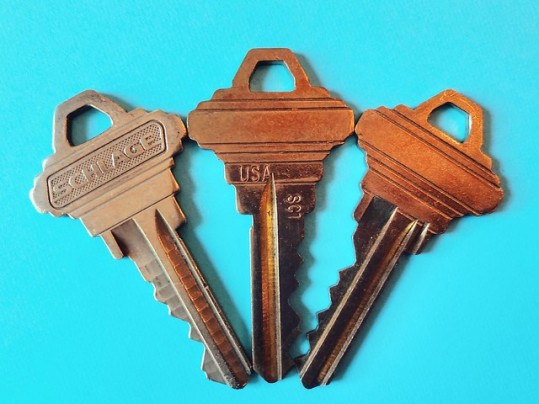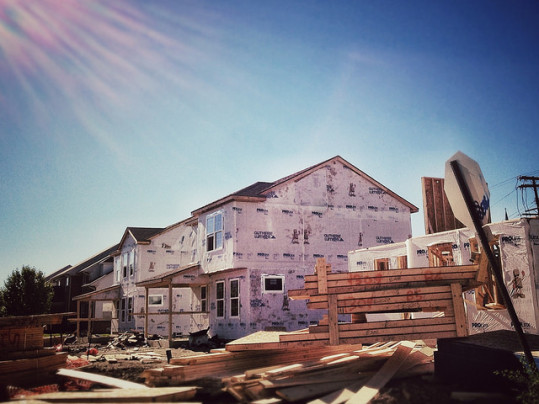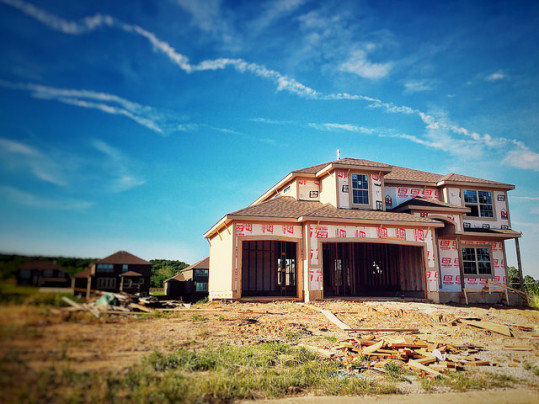In a hot housing market, where there are more buyers than there are homes for sale, competition rises. A good house will attract multiple buyers and give the home’s seller the benefit of choosing whose offer is best. This, of course, can be stressful for home buyers, as it most often means paying more than expected or losing the house to another buyer. This year, with for-sale inventory down and buyer interest surging, the market has seen plenty of competition. Home shoppers have had to act quickly and decisively in order to beat other buyers and successfully purchase a home. In fact, according to one analysis, nearly 60 percent of home buyers who bought a home in August faced competition. That’s significant. But fortunately for fall house hunters, there’s some potential good news on the horizon. That’s because, in September the number of home buyers reporting that they faced competition fell for the first time in five months. The nearly 3 percent decline could be a sign that the market may finally start to cool off after a hot summer. (source)
Archive for October 2020
Builder Confidence Sets Another All-Time High
Builders don’t build homes, if they don’t feel there’s a market for them. That’s why, the National Association of Home Builders’ Housing Market Index – which measures builder confidence in the market for newly built single-family homes – is considered an important indicator. After all, if builders are feeling good about selling new homes, they will build more, which is good for the market and overall economy. The index, which the NAHB has conducted for 35 years, is measured on a scale where any number above 50 indicates more builders view conditions as good than poor. In October, it rose to 83, which is an all-time high. It’s also only the second time it’s been over 80. The previous time was last month. Chuck Fowke, NAHB’s chairman, says traffic is high and demand is strong. “Traffic remains high and record-low interest rates are keeping demand strong as the concept of ‘home’ has taken on renewed importance for work, study, and other purposes in the COVID era,” Fowke said. Regionally, home builders in the West were most optimistic, followed by the Northeast, South, and Midwest. (source)
Buyers Push Housing Market Past 2019 Levels
It’s not surprising that the coronavirus had many economists, analysts, and experts expecting the housing market to suffer in 2020. Social distancing, stay-at-home orders, and fear were all expected to slow sales and put the brakes on what was originally forecast to be a hot spring/summer market. But since buyers bounced back faster than predicted, the housing market’s outlook has gotten much brighter. For example, Fannie Mae’s Economic and Strategic Research Group’s most recent outlook calls for annual home sales, mortgage origination volume, and home price growth all to significantly outpace their 2019 levels. Amid a historic pandemic, that’s no small feat. Doug Duncan, Fannie Mae’s chief economist and senior vice president, says supply – not demand – has turned out to be the big issue in 2020. “Housing continues its multi-year theme of historic supply constraints,” Duncan said. “Strong demand-side drivers, including low mortgage rates and a surge of millennials looking to purchase homes, are contributing to significant home price appreciation, particularly as many older homeowners continue to age in place and other would-be home-sellers adopt a more conservative posture due to COVID-19 concerns, further limiting supply.” (source)
Home Sales Outpace New Home Construction
If you made a chart comparing the number of home sales to the number of new homes being built they’d follow a similar path. After all, when homes are selling, builders build more. So when buyer demand rises, so does new home construction. However, there are times when the two become disconnected. For example, during the housing boom of the early 2000s, home construction outpaced sales and caused an inventory overage that became a factor during the housing crisis. These days, however, we have the opposite problem. Home sales are far exceeding housing starts. So what does that mean for home buyers and sellers? Well, it means the market is imbalanced and will remain so until buyer demand slows or new home construction ramps up. In the meantime, you should expect homes to sell quickly, prices to rise, and competition to be significant. The good news is, according to the National Association of Home Builders, current housing conditions all point to increasing new home construction in the months ahead. And, if this happens, it will help realign sales and starts, which will bring balance and improved affordability to the market. (source)
Record Low Rates Keep Mortgage Demand Strong
According to the Mortgage Bankers Association’s Weekly Applications Survey, average mortgage rates set another record low last week. Rates were down for 30-year fixed-rate loans with both conforming and jumbo balances, though 15-year fixed-rate loans and those backed by the Federal Housing Administration remained unchanged from the week before. Joel Kan, MBA’s associate vice president of economic and industry forecasting, says record low rates have kept mortgage demand running high. “Refinance and purchase activity continue to run well ahead of last year’s pace, fueled by record low rates and strong home buyer demand,” Kan said. “Housing supply is a challenge for many aspiring buyers, but activity should continue to stay strong the rest of the year.” Demand for loans to buy homes is now up 24 percent over the same week one year ago. Refinance activity is 44 percent higher year-over-year. The MBA’s weekly survey has been conducted since 1990 and covers 75 percent of all retail residential mortgage applications. (source)
Vacation Metros See Surging Popularity
Anyone who’s been on a great vacation knows how a beautiful spot can get the imagination going. Sunny beaches, mountain views, and seaside towns often lead to daydreams about packing up and starting over somewhere new, far from home. But while these are just fantasies most of the time, one online real-estate portal says the pandemic has more of us looking into making them a reality. According to the analysis, the number of page views of listings in vacation metros is up over last year. In fact, views of vacation listings are up nearly 50 percent from one year ago. Compared to a 37 percent increase in overall views nationally, that’s significant. But what does it mean? Well, it could mean Americans are shopping for a second home, just dreaming of a new life, or actually making one happen. The pandemic has caused us to reconsider where and how we’d like to live – and remote work has opened up possibilities that weren’t available in the past. Whatever the case, views in places like Myrtle Beach, S.C., Key West, Fla., Lake Tahoe, Nev., Cape Cod, Mass., and Park City, Utah are spiking and pending sales numbers indicate so are sales. (source)
Mortgage Credit Availability Tightens In September
Lending standards aren’t fixed. There are times when it’s easier to get a mortgage and times when getting approved to borrow requires you to be in better financial standing. For prospective home buyers, that means having a higher credit score, more money in the bank, a bigger down payment, etc. The Mortgage Bankers Association tracks how available mortgage credit is with their monthly Mortgage Credit Availability index. The index measures whether standards are becoming tighter or loosening. In short, it gauges how easy it is for buyers to get approved for a loan. In September, the index found that standards have tightened. Joel Kan, MBA’s associate vice president of economic and industry forecasting, says the market is strong, but uncertain. “Across all loan types, there continues to be fewer low credit score and high-LTV loan programs,” Kan said. “The housing market overall is on strong footing, but the data show that lenders are being cautious, given the spike in mortgage delinquency rates in the second quarter, as well as the ongoing economic uncertainty.” (source)







